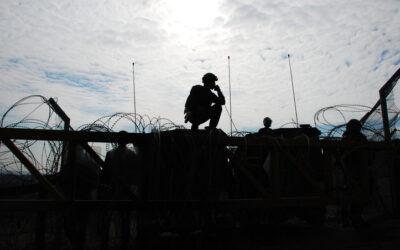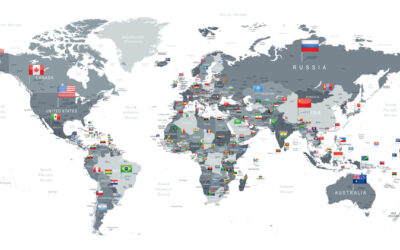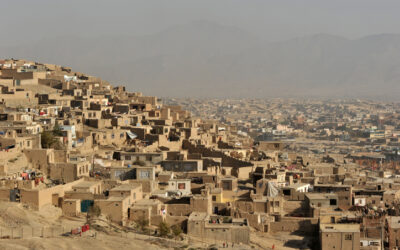
How Safe Would We Be Without Section 702?
SUBSCRIBER+EXCLUSIVE INTERVIEW — A provision of the Foreign Intelligence Surveillance Act that has generated controversy around fears of the potential for abuse has proven to be crucial […] More
Over four years have passed since Kim Jong-un took over the leadership of North Korea after the death of his father, Kim Jong-il, in late 2011. At the time, some hoped that Kim Jong-un’s young age and western education would lead him to set North Korea on a path toward economic liberalization and away from diplomatic belligerence. Four years in, such hopes appear naïve. The development of a nuclear deterrent has continued in full spree. Though minor economic changes have occurred, major liberalizations are yet to be seen.
Kim Jong-un’s tenure is not easily summarized. Only the past few months have seen both a claimed (but unlikely) successful hydrogen bomb test and the presumed purge and execution of the chief of North Korea’s general staff, Ri Yong Gil. In order to evaluate the most important policy trends under Kim, a natural starting point is the policy doctrine that he declared himself a year and a half into his tenure. In a speech on March 31st, 2013, Kim Jong-un declared his policy of byungjin, meaning parallel development of the country’s economy and defensive capabilities. Some see economic progress and arms buildup as mutually exclusive, but Kim has refused to choose one or the other.
Kim Jong-un has arguably given economic issues more attention than his father ever did. He has introduced some modest economic policy changes and launched more than ten special economic zones for tourism and foreign investment. In his first public speech, he promised that the North Korean people would “never have to tighten their belt again.” Last year also saw some very pragmatic rhetoric from Kim on North Korea’s forestry situation. In the context of discussing the country’s reforestation needs, Kim acknowledged some crucial problems that are inherent to North Korea’s economic system and planning.
Rumors of agricultural reforms began to flourish shortly after Kim took power. Some reforms have undoubtedly been launched to give North Korean farmers greater autonomy in order to increase production, but their full extent and impact still remain unclear. North Korea has suffered food shortages ever since the collapse of its economy in the early 1990s.
Kim has also launched a rather massive drive for special economic zones (SEZs). The first zones were launched in 2013 and more followed the next year. Thus far, Kim hasn’t appeared willing to fundamentally change judicial frameworks and institutions, measures that would be needed to create an environment that responsible foreign investors would find favorable.
In other words, for the economy, Kim Jong-un’s tenure has been a mixed bag. On the one hand, he has shown a sense of pragmatism in acknowledging North Korea’s problems. On the other hand, no fundamental systemic changes have occurred. Kim has launched massive construction projects and modernization in Pyongyang, North Korea’s capital city. Not to mention the presumably very, very expensive ski-resort Masikryong and other prestige projects. Such investments have shown that Kim is cognizant of the need to keep the elite happy, but these prestige projects do not impact the lives of the majority of the country’s citizens, who live far away from the relative luxury of the capital city.
The other side of Kim’s dual policy line has progressed faster than economic development. In mid-December, Kim signed an order for North Korea to test a hydrogen bomb (or so North Korean state television said), and the country promptly went ahead with the test in January. It matters less that many international monitoring agencies have said the test is unlikely to have been of a fully functioning hydrogen bomb. At the very least, it shows that North Korea is striving to reach this capacity.
In total, North Korea has conducted four nuclear tests, two of which have occurred under Kim Jong-un’s tenure. North Korea’s nuclear program is not merely a strategic bargaining chip anymore but a core part of their defense capability. This fact has been increasingly solidified under Kim’s rule. The nuclear program also has domestic political value. Many North Koreans support the government’s drive towards a full nuclear deterrent, and the potential of the nuclear weapons program as a source of legitimacy for the regime should not be underestimated.
The extensive purges under Kim’s rule should also be seen in this light. No other picture is as iconic and signifying for Kim Jong-un’s rule as that of his uncle, Jang Song-taek, at the hands of two North Korean guards during his show trial in December 2013. Kim Jong-un’s tenure has seen an extensive number of purges of government officials in the top strata. According to South Korean intelligence estimates, over 70 officials have thus far been purged under Kim. Purges like these are part of everyday life for the top strata in authoritarian dictatorships. Under Kim Jong-un, however, tensions have reportedly run remarkably high. This may be a temporary phenomenon that passes as North Korea fully transitions from the power structures of the era of Kim Jong-il. Nevertheless, tensions in the political top have been one of the signifying factors of Kim Jong-un’s rule.
One important lesson from Kim Jong-un’s rule applies to many countries other than North Korea: a western education and young age does not a liberalizing leader make. Many thought they could predict features of Kim’s rule by these two factors alone, but unsurprisingly, both political systems and leaders are far more complex.
Related Articles

SUBSCRIBER+EXCLUSIVE INTERVIEW — A provision of the Foreign Intelligence Surveillance Act that has generated controversy around fears of the potential for abuse has proven to be crucial […] More

In the Biden Administration’s highest-level face-to-face visit, Secretary of State Antony Blinken is traveling to the Middle East to seize momentum created by last week’s […] More

In the midst of World War II, facing multiple threats in a complicated series of engagements around the world, the US and the UK entered […] More

Cipher Brief Expert Tim Willasey-Wilsey served for over 27 years in the British Foreign and Commonwealth Office where his focus was on South Asia and […] More

As Bitcoin and other cryptocurrencies rise to record levels ahead of the direct offering of crypto exchange Coinbase, former Acting CIA Director Michael Morell is […] More

EXPERT ANALYSIS — At a time when western officials are focusing their attention toward national security threats posed by China, the war in Yemen is […] More
Search